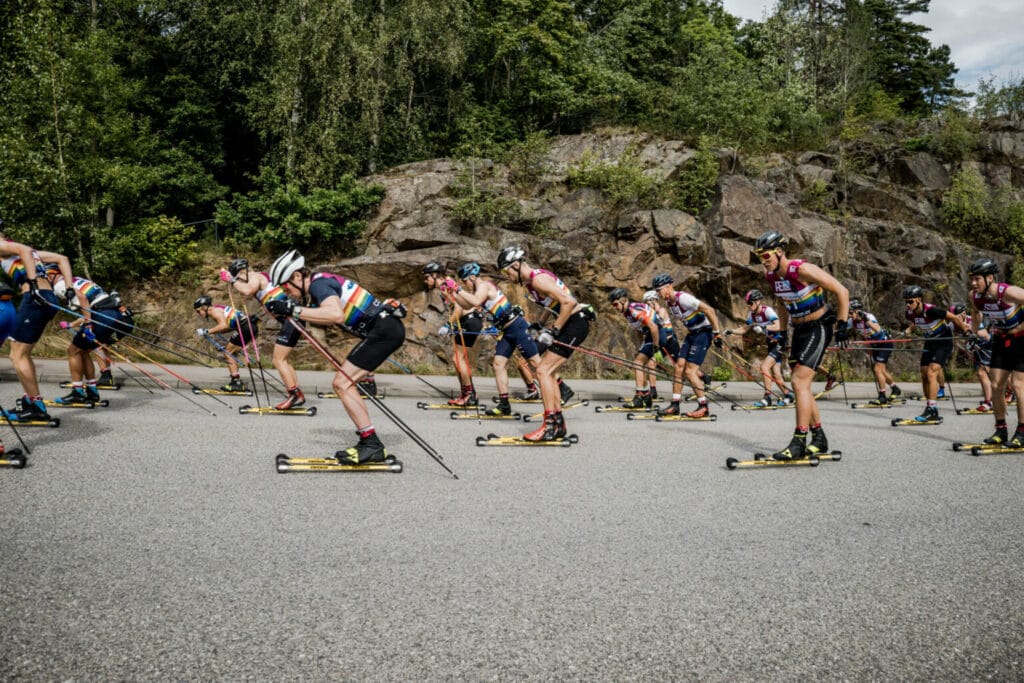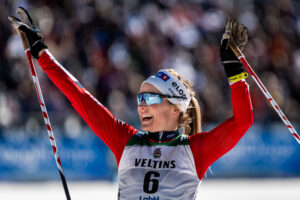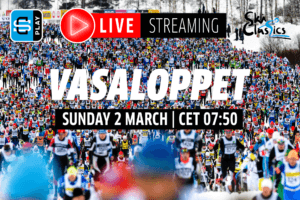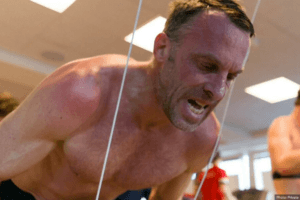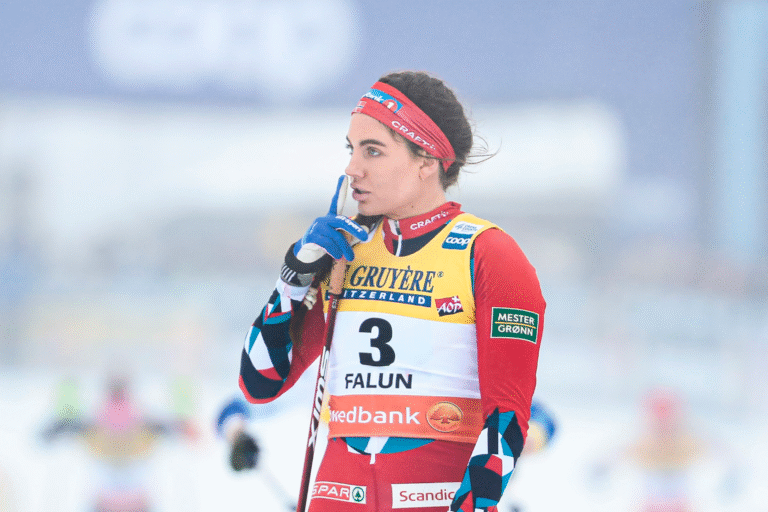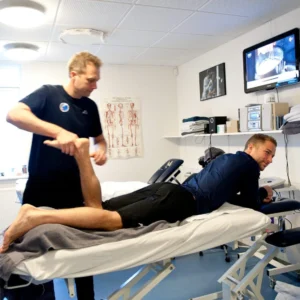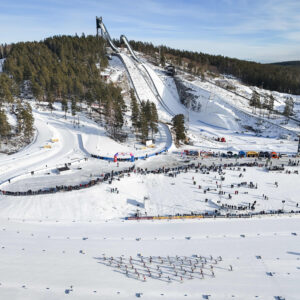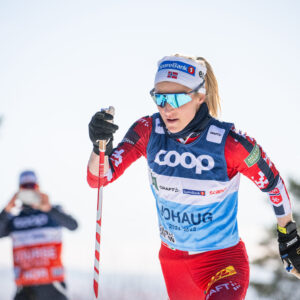Injury-free roller skiing: Top tips from Petter Eliassen
Prepare for injury-free roller skiing with Petter Eliassen. As summer approaches, skiers gear up for the roller ski season. Learn about common injuries, preventive techniques, strength exercises, cross-training benefits, and injury management from the expert. Optimize your performance and stay safe on the roads and tracks.
Summer is approaching, and it is time for roller skiing. Roller skiing is a popular summer training method for long-distance athletes, traditional cross-country skiers, and biathletes, allowing them to simulate the movements and conditions of skiing even during the off-season. While roller skiing offers numerous benefits for athletes, it is not without its risks. Athletes in this sport often face specific injuries requiring attention and preventive measures.
One common injury among roller skiers is shoulder, elbow, and wrist pain. The intense pole movements combined with the strain placed on these joints can result in overuse injuries, such as tendonitis or inflammation in the tendons of the triceps and wrist flexors. Skiers often experience medial elbow pain, which can be particularly troublesome and affect performance.
Falls and impact injuries are also prevalent in roller skiing. As athletes navigate uneven surfaces and encounter obstacles, the risk of accidents increases. Falls can result in abrasions, bruises, sprains, or even fractures. Wearing appropriate protective gear can significantly reduce the severity of injuries sustained during falls.
Muscle strains and sprains are common due to the demanding nature of roller skiing on the body’s muscles. Athletes may experience strains or sprains in muscles and ligaments such as the quadriceps, shoulders, and ankle joints. Skiers must incorporate proper warm-up routines and stretching exercises to minimize the risk of these injuries and gradually increase training intensity to allow muscles to adapt and avoid sudden strain.
Another injury specific to roller skiing is road rash. This occurs when a skier’s skin contacts the pavement during a fall, resulting in abrasions and scrapes. Road rash injuries can range from minor cuts and bruises to more severe wounds that may require medical attention. Wearing appropriate clothing, including long sleeves, pants, and gloves, can provide some protection and help prevent road rash.
Read More: Roller ski training? Don’t ski these three safety tips
Injury-proof your body with advice from Petter Eliassen
Skiers should prioritize proper technique and form to ensure a safe roller skiing experience, focusing on maintaining correct posture and executing movements with precision. Additionally, incorporating strength and conditioning exercises into training routines, particularly targeting core muscles, can enhance stability and reduce the risk of injury.
By being aware of the potential injuries associated with roller skiing and taking appropriate preventive measures, athletes can enjoy the sport safely and optimize their performance on the trails.
In a previous interview* with ProXCskiing.com, Petter Eliassen, one of the most accomplished Pro Team athletes ever and an expert in long-distance and traditional cross-country skiing, who currently works as a physiotherapist, talked about common injuries, injury prevention techniques, strength and conditioning exercises, cross-training benefits, and injury management strategies for skiers. Petter Eliassen provided valuable insights into these aspects of the sport.
The story continues below.
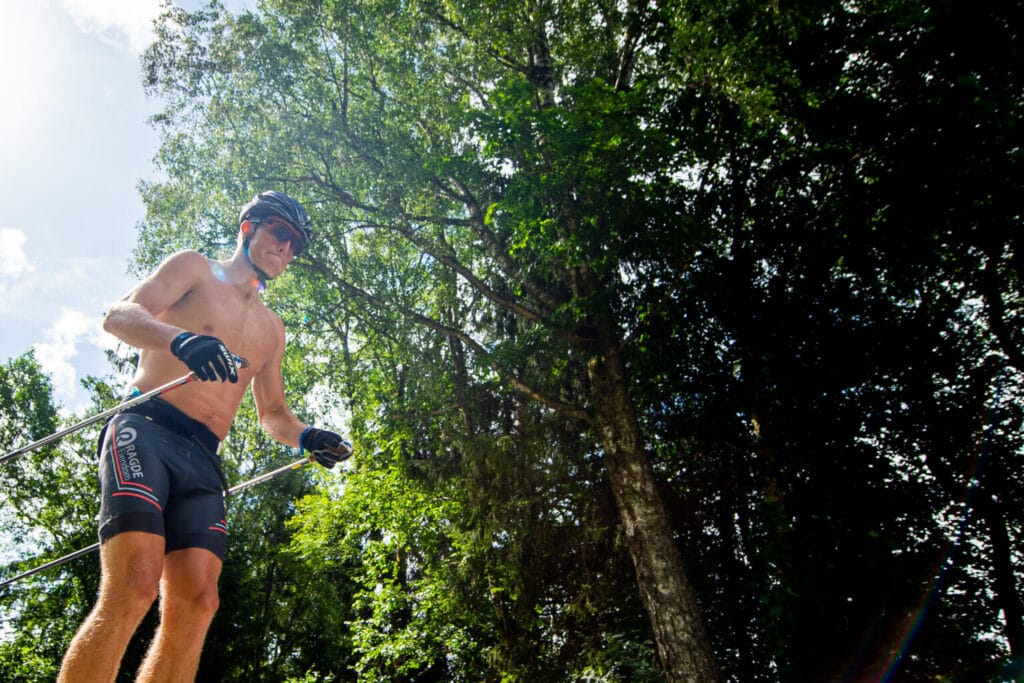
Can you share some common injuries that athletes often encounter, especially when roller skiing, and what are the primary causes of these injuries?
“Typical injuries among roller skiers include shoulder, elbow, and wrist pain, particularly medial elbow pain affecting the triceps tendons and wrist flexors.”
Are there any specific techniques or adjustments that skiers should focus on to minimize the risk of injury while roller skiing?
“It’s beneficial to always have sharp tips on the poles, especially in cold conditions, as gaining grip on the asphalt requires less effort. Additionally, skiers should focus on developing strength in the triceps, maintaining stability around the shoulder girdle, and improving flexibility in larger muscles like the pectoralis and latissimus dorsi. Incorporating periodic upper back mobilization exercises, such as rotation movements, can also be helpful.”
Are there any specific strength and conditioning exercises that skiers should incorporate into their training routines to prevent injuries?
“It is crucial to have strong abs and core muscles. Starting with easy core exercises is a good way to begin.”
How does cross-training in other sports or activities contribute to injury prevention in long-distance and traditional cross-country skiing?
“Having overall strength and mobility is beneficial and doesn’t have to consume too much time. Running can give the upper body some rest, and engaging in other sports on days when the muscles used for ‘double poling’ are tired can be advantageous.”
Can you provide advice on injury management and rehabilitation strategies for skiers who may be facing an injury?
“Seeking advice from healthcare professionals is recommended. They can address the underlying causes and identify weak spots that can be targeted to enhance resilience against future injuries. Rehabilitation is often a challenging process that requires loading adjustments, mental support, and confirmation that progress is being made. Patience and maintaining a long-term perspective can be beneficial,” says Petter Eliassen.
Also Read: Kateřina Smutná advises on how much to train on roller skis
In conclusion, roller skiing is a valuable training method for long-distance athletes, traditional cross-country skiers, and biathletes, allowing them to simulate skiing movements and conditions during the off-season.
However, it is essential to be aware of the potential injuries associated with this sport and take appropriate preventive measures. From shoulder and elbow pain to falls and impact injuries, skiers should prioritize proper technique, wear protective gear, and incorporate strength and conditioning exercises into their training routines.
By following the advice and insights provided by Petter Eliassen, skiers can minimize the risk of injuries, enjoy a safe roller skiing experience, and optimize their performance on the roads and tracks. Remember, injury prevention is crucial for long-term success in sport. Stay injury-free and keep pursuing your passion for long-distance and traditional cross-country skiing.
*This article was originally published in May 2023.
Earlier this Spring, ProXCskiing.com published our Roller Ski Guide 2025 – YOU CAN FIND IT HERE
Read More: Setting SMART goals for the summer training season
Are you interested in training for long-distance and traditional cross-country skiing? Click HERE and read more about it.
